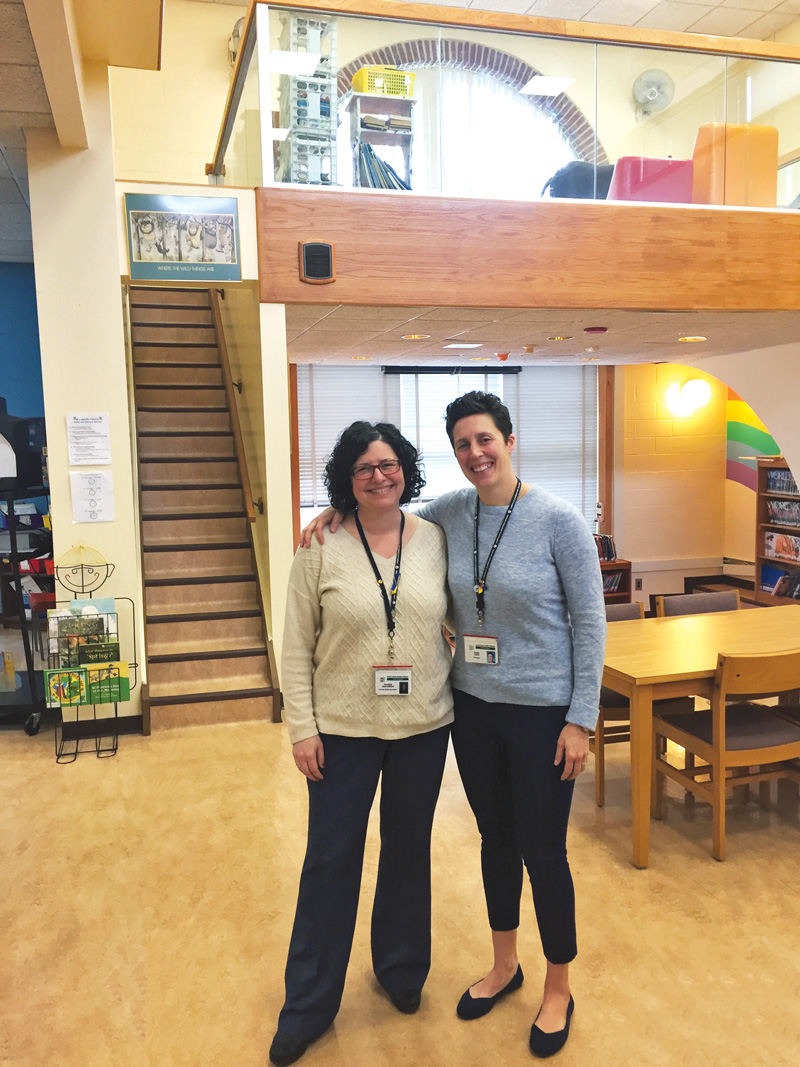Paying Attention | Editorial
What mindfulness looks like at my daughter’s school.
 |
Lakeville Librarian Cindy Manzi and Principal Emily Zucal in front of the future mindfulness loft, currently being envisioned for the school. |
As I sat down to compose this, I paused, closed my eyes, and pictured myself "like a frog on a lily pad." Breathing quietly, I felt restfulness as the day’s pressures receded. That visualization was one of many tactics I witnessed recently when I visited my daughter’s grade school, where practicing mindfulness is part of the educational culture.
I thought of the heartfelt approach at Lakeville Elementary School in Great Neck, NY, as soon as the conceptualization of this month’s feature package on social-emotional learning (SEL) was under way. As Drew Himmelstein writes in "How Social-Emotional Learning Transforms Students and Schools," the benefits of SEL are many. I wanted to see them in action.
At Lakeville, a focus on mindfulness started in 2015, when "mindfulness was everywhere," Lakeville principal Emily Zucal told me. "It seemed like there was something there for educators." During the 2015–16 school year, the Lakeville Shared Decision Making Committee set a goal to learn more.
Mindfulness, Zucal said, is a "tool to help kids learn to control their attention" and increase focus. The committee did research, shared readings, brought in an expert, and shared what they found with faculty and parents. We’re always telling kids to "pay attention," she said, but not "teaching them about attention as a thing kids have."
As part of the process, a group of teachers voluntarily embarked on an eight-week mindfulness course. They realized that "if we could be grounded in our mindfulness practice, we would be stronger" as educators, Zucal recalled. In 2016, the committee created guides for teachers and parents. The seed was planted. The integration of mindfulness practices at Lakeville is organic, with uptake completely voluntary. Some teachers work with it regularly. Zucal models it at staff meetings and in how she communicates with students and parents.
In the classroom, it’s anchoring and energizing to watch. We stepped into Jennifer Brenner’s first grade class, where students sat in a circle on a rug with Brenner, taking turns reflecting on their Mindfulness Journals as part of the morning routine. Brenner actively listened and responded, identifying themes and polling for commonalities via "quiet hands" and thumbs up. She then moved the group into a minute of stillness guided by bells. The kids were tuned in.
In the second grade classroom of Chrissy Gordon and Kathy Feldman, the lights were dim when we ducked in. Some 20 kids sat on the rug facing Feldman as she prepared for a three-minute meditation. After reviewing strategies to help focus (enter frog and lily pad), she asked them to choose one while visualizing how they want their day to go. Referring to her Calm app, she noted that some 500,000 people had meditated that morning: "We are going to join them." I just loved that.
Next, a mindfulness loft is in the early stages of planning. To my happy surprise, it will be in Cindy Manzi’s wonderful library.

RELATED
The job outlook in 2030: Librarians will be in demand
The job outlook in 2030: Librarians will be in demand
ALREADY A SUBSCRIBER? LOG IN
We are currently offering this content for free. Sign up now to activate your personal profile, where you can save articles for future viewing






Add Comment :-
Be the first reader to comment.
Comment Policy:
Comment should not be empty !!!